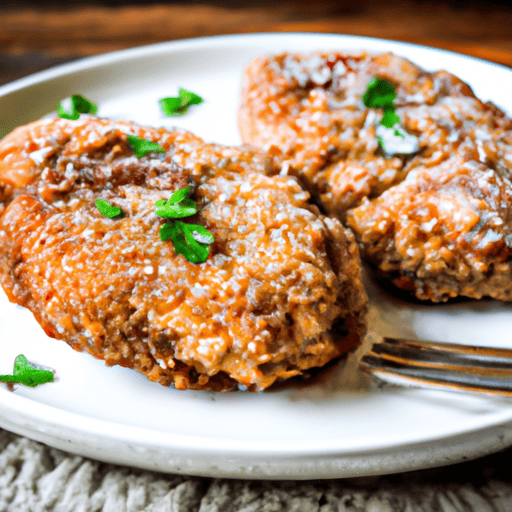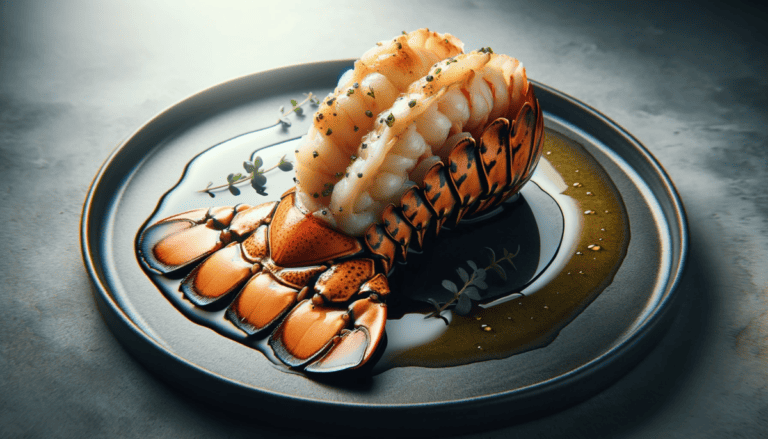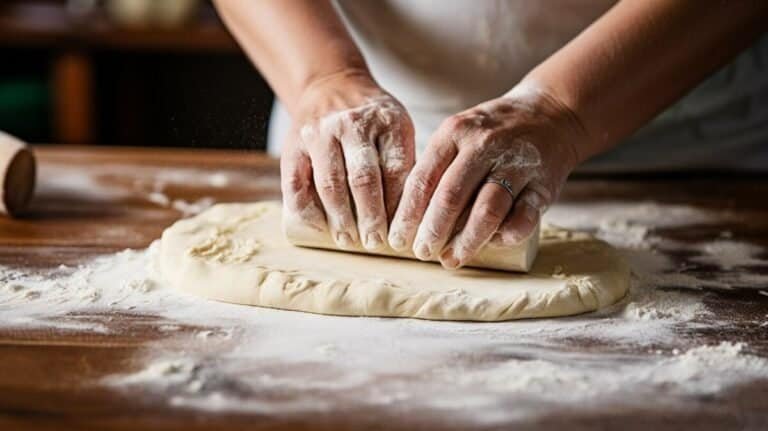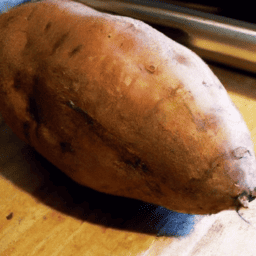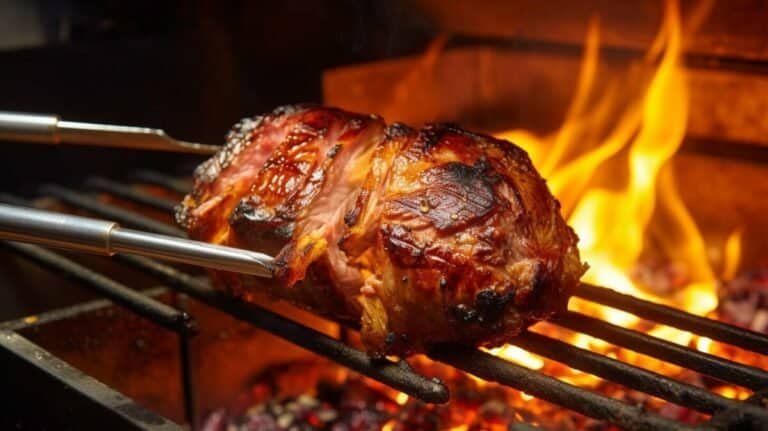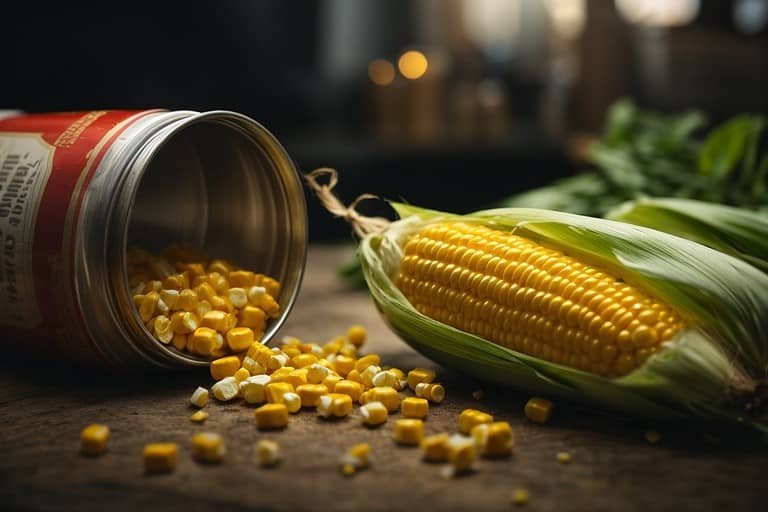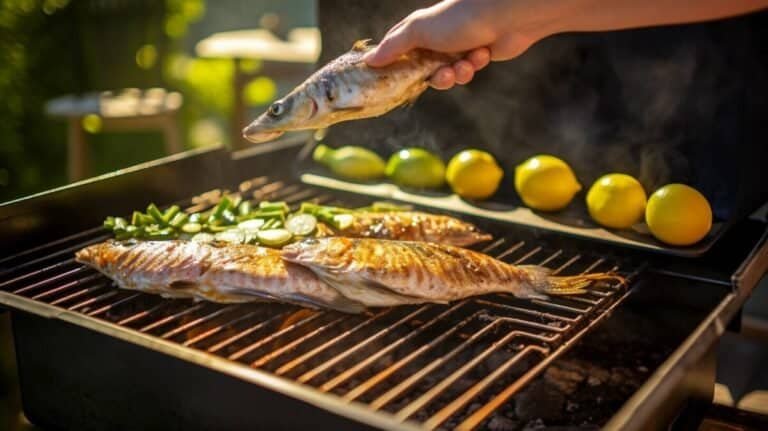How To Cook Veal Cutlets
If you’ve ever wanted to impress your guests with a mouthwatering meal, look no further than veal cutlets. In this article, you’ll discover the secrets of cooking these tender and flavorful delicacies to perfection. From selecting the right meat to creating a crispy golden crust, we’ll guide you through each step of the process, ensuring that your veal cutlets turn out irresistible every time. So grab your apron and get ready to become a gourmet chef in your very own kitchen!
Understanding Veal Cutlets
What are veal cutlets
Veal cutlets are thin slices of tender, young veal that are often referred to as “scallopini” or “escalopes.” They are highly prized for their delicate and tender texture, making them a popular choice for many delicious recipes. Veal cutlets are versatile and can be prepared in various ways, including baking, sautéing, or grilling.
Different types of veal cutlets
There are several different types of veal cutlets, each offering its own unique qualities and flavors. Some of the most popular types include:
- Classic veal cutlets: These are the most common and widely available cutlets. They are typically boneless and come from the leg or loin of the veal.
- Rib veal cutlets: These cutlets are taken from the rib area of the veal and are known for their rich and juicy flavor.
- Shoulder veal cutlets: Cut from the shoulder area, these veal cutlets are slightly tougher than other cuts but can be incredibly flavorful when prepared correctly.
- Tenderloin veal cutlets: Cut from the tenderloin, these veal cutlets are the most tender and lean. They are perfect for those looking for a low-fat option.
Nutritional value of veal cutlets
Veal cutlets are not only delicious but also provide several essential nutrients. They are a great source of high-quality protein, vitamins, and minerals, including vitamin B12, iron, and zinc. Veal cutlets also contain lesser saturated fat compared to other meats. Incorporating veal cutlets into a balanced diet can offer numerous health benefits.
Preparing for Cooking
Checking the freshness of veal cutlets
Before cooking veal cutlets, it’s important to ensure that they are fresh and of high quality. Here are a few tips to check the freshness:
- Look for bright pink color: Fresh veal cutlets should have a vibrant pink hue. Avoid cutlets that appear grey or brown.
- Check for firmness: The cutlets should be firm to the touch, indicating that they haven’t been sitting for too long.
- Smell the meat: Fresh veal cutlets should have a mild, slightly sweet aroma. If they have a strong, unpleasant odor, they may not be fresh.
Proper cleaning and washing of veal cutlets
Cleaning veal cutlets properly is essential to ensure food safety. Follow these steps to clean and wash the cutlets:
- Rinse under cold water: Place the veal cutlets under cold running water to remove any loose particles or debris.
- Pat dry: Gently pat the cutlets dry using clean paper towels to remove excess moisture.
- Sanitize cutting boards and utensils: Clean and sanitize all cutting boards, knives, and utensils used during the preparation of veal cutlets to avoid cross-contamination.
Useful tools and equipment for cooking veal cutlets
To make the cooking process easier and more efficient, there are a few essential tools and equipment you’ll need for cooking veal cutlets. These include:
- Meat tenderizer: A meat tenderizer helps to break down the fibers in the veal cutlets, resulting in a more tender and flavorful end product.
- Meat thermometer: A meat thermometer is crucial for determining the internal temperature of the cutlets, ensuring they are cooked to perfection.
- Skillet or frying pan: A good quality skillet or frying pan is essential for sautéing veal cutlets.
- Oven-safe dish: If you prefer baking the cutlets, an oven-safe dish is necessary.
- Grill or grill pan: If you choose to grill the veal cutlets, a grill or grill pan will be needed.
Marinating the Veal Cutlets
Why is marinating important
Marinating veal cutlets before cooking is essential as it helps to enhance their flavor, tenderness, and juiciness. The marinade not only imparts delicious flavors but also helps to break down the connective tissues in the meat, resulting in a more tender end product.
Creating a basic marinade for veal cutlets
To create a basic marinade for veal cutlets, you’ll need a few staple ingredients such as:
- Olive oil: provides moisture and helps the marinade penetrate the meat.
- Acidic ingredient: such as lemon juice, vinegar, or wine, which helps to tenderize the cutlets.
- Herbs and spices: such as garlic, thyme, rosemary, or black pepper, to add flavor.
To prepare the marinade, simply combine these ingredients in a bowl or resealable plastic bag, and add the veal cutlets. Ensure that the cutlets are fully coated with the marinade and refrigerate for at least 30 minutes to allow the flavors to develop.
Time duration for marinating veal cutlets
The time duration for marinating veal cutlets can vary depending on personal preference and the recipe you’re following. As a general guideline, marinating veal cutlets for 30 minutes to 2 hours will infuse them with plenty of flavor. However, for a more intense flavor, you can marinate them overnight in the refrigerator.
Seasoning the Veal Cutlets
Appropriate seasoning ingredients
When it comes to seasoning veal cutlets, there are numerous options to enhance their taste. Some popular seasoning ingredients include:
- Salt and pepper: These classic seasonings bring out the natural flavors of veal cutlets.
- Herbs and spices: Experiment with various herbs and spices like garlic powder, onion powder, paprika, or Italian seasoning to add depth and complexity to the dish.
- Sauces and marinades: Utilize the flavors from the marinade for an added boost. Additionally, condiments like Worcestershire sauce or soy sauce can elevate the taste.
Seasoning process
To season veal cutlets, start by patting them dry with paper towels to remove any excess moisture. Then, sprinkle both sides of the cutlets generously with salt and pepper or any other desired seasonings. Massage the seasonings into the meat to ensure even coverage.
Alternative seasoning options
If you want to try something different, there are alternative seasoning options that can add a unique twist to your veal cutlets. Consider experimenting with:
- Herb crust: Combine finely chopped fresh herbs, such as parsley, basil, or thyme, with breadcrumbs to create a flavorful herb crust for the veal cutlets.
- Dijon mustard: Spread a thin layer of Dijon mustard on both sides of the cutlets to add tanginess and depth of flavor.
- Parmesan cheese: Sprinkle grated Parmesan cheese mixed with breadcrumbs over the cutlets for a crispy and savory coating.
Cooking Process
Oven-baking method
Oven-baking is a popular method for cooking veal cutlets, resulting in a tender and juicy dish. To oven-bake veal cutlets, follow these steps:
- Preheat the oven: Set the oven to the appropriate temperature mentioned in your recipe, usually around 375°F (190°C).
- Prepare the cutlets: Place the seasoned cutlets on a greased or parchment-lined baking sheet, ensuring they are not overcrowded.
- Bake the cutlets: Place the baking sheet in the preheated oven and cook for about 15-20 minutes or until the cutlets are cooked through and reach an internal temperature of 145°F (63°C).
- Let rest: Allow the veal cutlets to rest for a few minutes before serving to allow the juices to redistribute.
Sauteing method
Sauteing veal cutlets is a quick and convenient cooking method that yields delicious results. To sauté veal cutlets:
- Heat a skillet: Heat a skillet or frying pan over medium-high heat and add a small amount of oil or butter.
- Cook the cutlets: Place the seasoned veal cutlets into the hot skillet and cook for about 2-3 minutes per side or until browned and cooked through.
- Rest before serving: Remove the cutlets from the skillet and let them rest for a few minutes to retain their juiciness before serving.
Grilling method
Grilling adds a smoky and charred flavor to veal cutlets, making it a fantastic option for outdoor cooking. Follow these steps to grill veal cutlets:
- Preheat the grill: Preheat the grill to medium-high heat.
- Oil the grill grates: Brush the grill grates with oil to prevent the cutlets from sticking.
- Cook the cutlets: Place the seasoned veal cutlets on the grill and cook for about 2-3 minutes per side, or until they reach an internal temperature of 145°F (63°C).
- Rest and serve: Allow the veal cutlets to rest for a few minutes to retain their juices before slicing and serving.
Ensuring Proper Cooking
Checking veal cutlets for doneness
To ensure that veal cutlets are cooked to perfection, it’s important to check for doneness. You can do this by using a meat thermometer or performing a visual check. The cutlets should have a slightly pink color inside while being cooked through.
Correct internal temperature of veal cutlets
The correct internal temperature of veal cutlets should reach 145°F (63°C) for safe consumption. This ensures that the cutlets are cooked to a medium level of doneness, with a slight hint of pinkness in the center.
What to do if veal cutlets are undercooked or overcooked
If veal cutlets are undercooked, you can return them to the heat source and continue cooking until they reach the desired doneness. If they are overcooked and have become dry, consider adding a sauce or serving them with a flavorful accompaniment to compensate for the dryness.
Serving Suggestions
Appropriate side dishes for veal cutlets
Veal cutlets pair well with various side dishes, enhancing the overall dining experience. Here are some popular side dish options:
- Roasted potatoes: Crispy roasted potatoes seasoned with herbs and spices complement the tenderness of veal cutlets.
- Steamed vegetables: Lightly steamed seasonal vegetables help to balance the richness of the veal cutlets.
- Risotto: Creamy risotto, flavored with ingredients like mushrooms or Parmesan cheese, can provide a luxurious side dish for veal cutlets.
- Salad: A fresh green salad, tossed with your favorite dressing, adds a refreshing element to the meal.
Presentation ideas
Presenting veal cutlets in an appealing manner can elevate the dining experience. Consider these presentation ideas:
- Plating: Arrange the veal cutlets neatly on a plate, garnish with fresh herbs, and drizzle with a sauce to enhance visual appeal.
- Family-style serving: Place the cooked veal cutlets on a large serving platter, allowing everyone to serve themselves.
- Sandwiches: Stuff the veal cutlets into crusty rolls or bread along with condiments and vegetables to create delicious sandwiches.
Pairing with wines
Pairing veal cutlets with the right wine can enhance the flavors of the dish. Consider these wine pairings:
- Pinot Noir: This medium-bodied red wine has a fruity and earthy flavor profile that complements the delicate taste of veal cutlets.
- Chardonnay: A buttery and oaky Chardonnay can harmonize with the richness of veal cutlets, especially if served with a creamy sauce.
- Sauvignon Blanc: This crisp and refreshing white wine pairs well with veal cutlets, adding brightness and acidity to the dish.
Storing and Reusing Leftovers
Proper way to store leftover veal cutlets
If you have leftover veal cutlets, it’s important to store them properly to maintain their quality. Follow these steps for storing leftovers:
- Let the cutlets cool: Allow the veal cutlets to cool down to room temperature before storing them.
- Wrap or seal: Wrap the individual cutlets tightly in plastic wrap or place them in an airtight container.
- Refrigerate: Store the wrapped or sealed cutlets in the refrigerator for up to 3 days.
Reheating process
When reheating leftover veal cutlets, it’s essential to retain their tenderness and moisture. Try these methods:
- Oven: Preheat the oven to 350°F (175°C). Place the cutlets on a baking sheet and warm them in the oven for about 10-15 minutes until heated through.
- Sauté pan: Heat a small amount of oil or butter in a sauté pan over medium heat. Add the cutlets and cook for a few minutes per side until heated through.
- Microwave: If you’re short on time, you can microwave the cutlets on a microwave-safe plate, covering them loosely with a damp paper towel, and heat in short bursts until warm.
Additional recipes using leftover veal cutlets
Leftover veal cutlets can be repurposed into several delicious dishes. Consider trying these recipes:
- Veal cutlet sandwich: Serve the leftover cutlets in a crusty roll with your favorite condiments, lettuce, and tomatoes for a satisfying sandwich.
- Veal cutlet salad: Slice the leftover cutlets and toss them with mixed greens, vegetables, and your preferred dressing to create a refreshing salad.
- Veal cutlet stir-fry: Cut the leftover cutlets into thin strips and stir-fry them with vegetables and Asian-inspired sauces for a quick and flavorful meal.
Common Veal Cutlet Mistakes and How to Avoid Them
Overcooking/Undercooking
Overcooking or undercooking veal cutlets can result in a less enjoyable dining experience. To avoid these mistakes, it’s crucial to follow the recommended cooking times and use a meat thermometer to ensure the cutlets reach the ideal internal temperature of 145°F (63°C).
Inadequate seasoning
Seasoning veal cutlets properly is essential for achieving delicious and flavorful results. To avoid inadequate seasoning, ensure that you season the cutlets generously with salt, pepper, and any desired herbs or spices. Don’t be afraid to experiment with different seasonings to find your preferred flavor profile.
Poor quality veal cutlets
Choosing poor quality veal cutlets can negatively impact the taste and texture of your dish. To avoid this mistake, always opt for fresh, high-quality veal cutlets from a reputable source. Check for freshness, look for vibrant pink color, and ensure the meat is firm to the touch.
Answering Popular Questions
Veal vs Beef cutlets
Veal cutlets and beef cutlets differ in several aspects. Veal cutlets come from young calves, while beef cutlets are derived from mature cows. As a result, veal cutlets are generally more tender and have a milder flavor compared to beef cutlets. Veal cutlets also tend to be smaller and lighter in color. The choice between veal and beef cutlets ultimately comes down to personal preference and the desired flavor and tenderness.
Dealing with tough veal cutlets
If you encounter tough veal cutlets, there are a few techniques you can try to make them more tender. One method is to use a meat mallet or tenderizer to pound the cutlets gently, breaking down the tough muscle fibers. Additionally, marinating the cutlets can help to tenderize them by introducing moisture and acid. Choose a marinade that contains acidic ingredients like lemon juice or vinegar. Finally, cooking the cutlets using a slow and moist cooking method, such as braising or stewing, can help to further tenderize the meat.
Vegetarian alternatives for veal cutlets
For individuals following a vegetarian diet, there are several options that can mimic the texture and flavor of veal cutlets. Some popular vegetarian alternatives for veal cutlets include:
- Seitan: Made from wheat gluten, seitan has a chewy and meat-like texture that can be shaped into cutlets.
- Portobello mushrooms: Grilled or sautéed portobello mushrooms can offer a satisfying and meaty alternative to veal cutlets.
- Eggplant or zucchini cutlets: Sliced eggplant or zucchini, breaded and pan-fried, can provide a similar texture to veal cutlets.
- Tofu: When pressed and prepared with flavorful marinades or seasonings, tofu can be transformed into a vegetarian alternative for veal cutlets.
By following these guidelines, you can confidently cook and enjoy delicious veal cutlets in various preparations, taking your culinary skills to the next level. Experiment with different methods, flavors, and side dishes to create a memorable dining experience centered around these tender and succulent cuts of meat.

